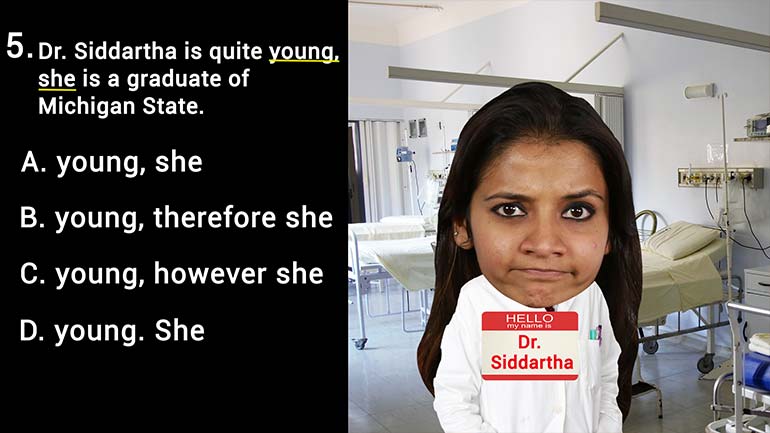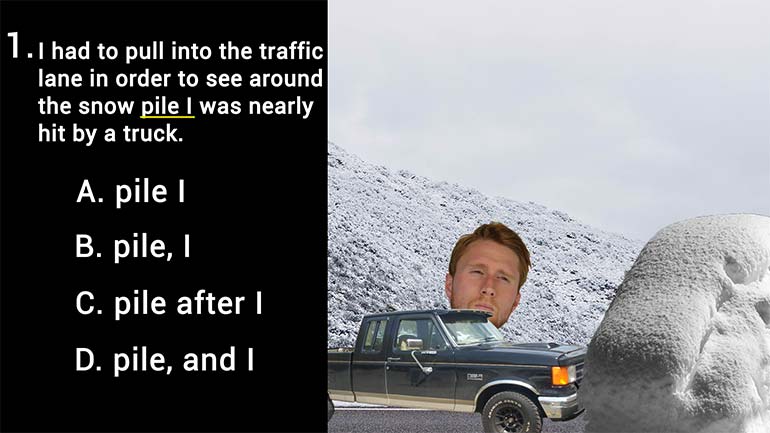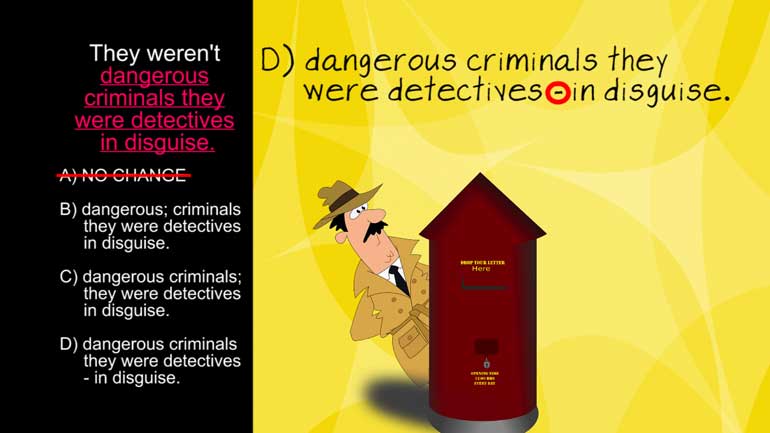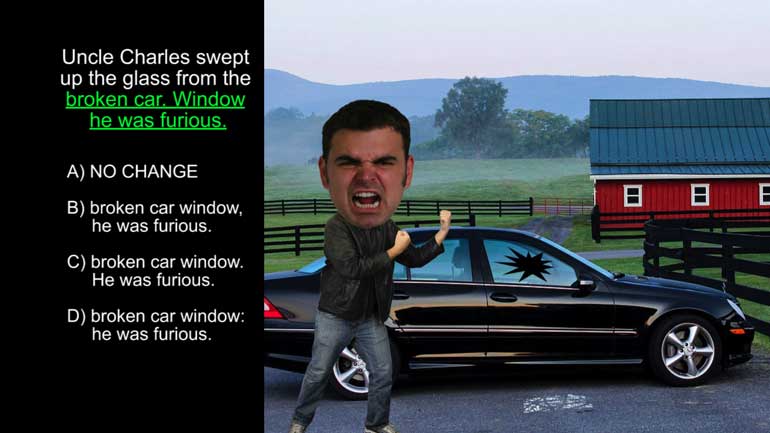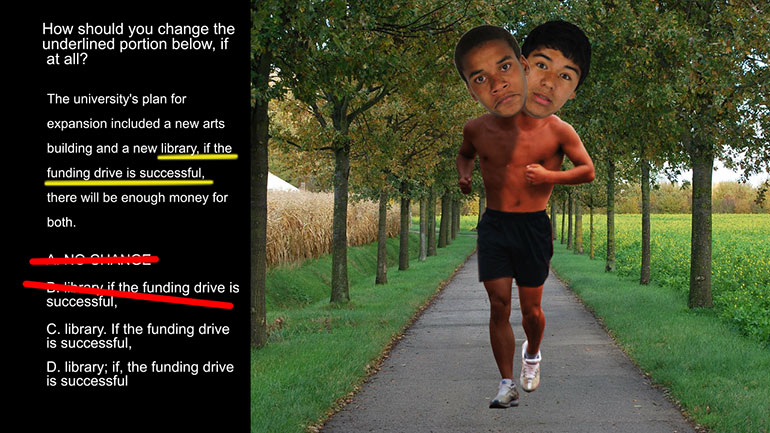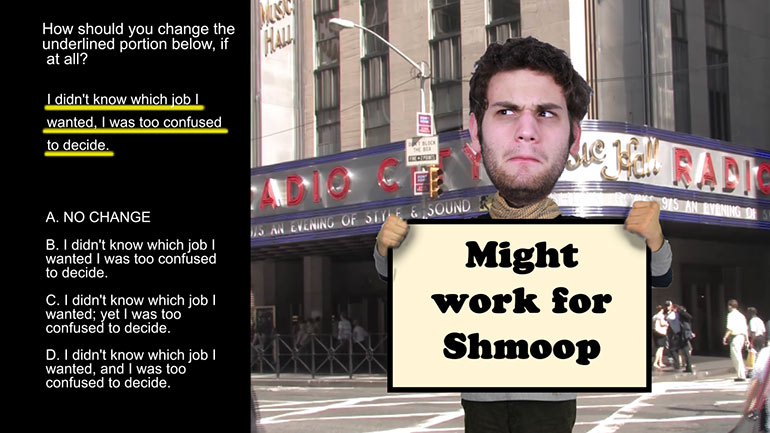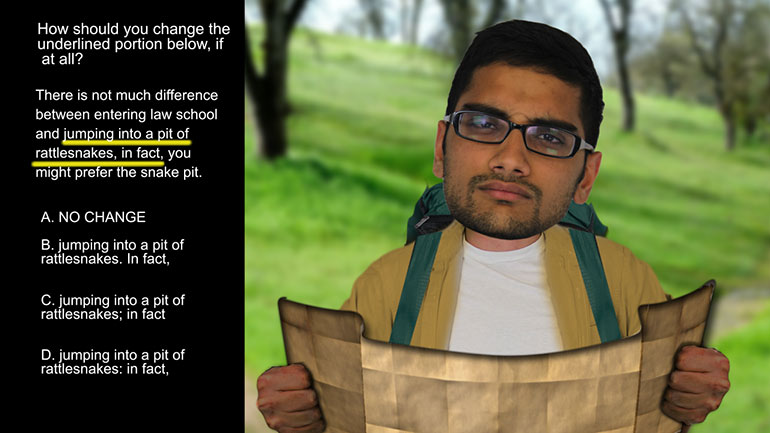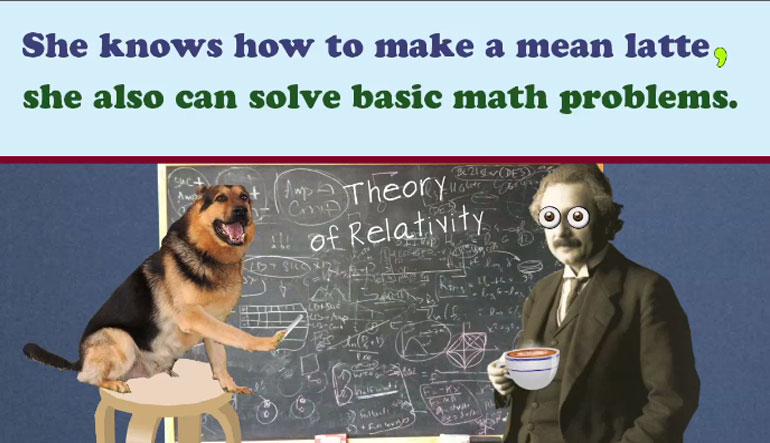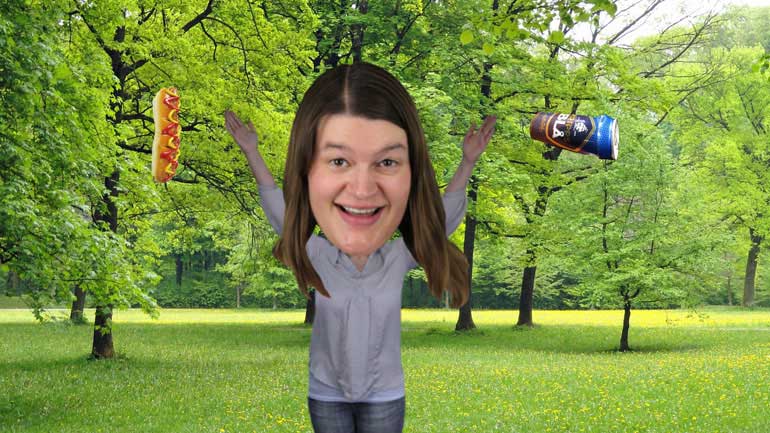ShmoopTube
Where Monty Python meets your 10th grade teacher.
Search Thousands of Shmoop Videos
Comma Splices and Run-on Sentences Videos 11 videos
Select the best version of the italicized part of the sentence. If you think the original sentence is best, choose the first answer.Dr. Siddartha i...
Select the best version of the italicized part of the sentence. If you think the original sentence is best, choose the first answer.Frida Kahlo beg...
Select the best version of the italicized part of the sentence. If you think the original sentence is best, choose the first answer.I had to pull i...
How to Complete the Sentence? 280 Views
Share It!
Description:
ACT English: Sentence Structure Drill 2, Problem 5. Which punctuation marks best complete the sentence?
Transcript
- 00:03
Here's your Shmoop du jour, brought to you by lawyers. So, you might want to check the
- 00:09
fine print before you sign.
- 00:11
How should you change the underlined portion below, if at all?
- 00:14
There is not much difference between entering law school and jumping into a pit of rattlesnakes,
- 00:21
in fact, you might prefer the snake pit.
Full Transcript
- 00:30
There's definitely more than one snake in this pit.
- 00:32
The phrase, "in fact," is coiled in the middle of this sentence, evilly plotting to throw
- 00:39
us off the trail.
- 00:40
See, "in fact" can sometimes function as a subordinating phrase.
- 00:45
If it were doing so here, it would turn the independent clause, "you might prefer the
- 00:50
snake pit" into a dependent one, meaning that the phrase would then not be able to exist
- 00:55
on its own anymore.
- 00:56
However, that's not what "in fact" is doing here at all. Besides acting as a subordinating
- 01:02
phrase, it can also sometimes act as an introductory phrase.
- 01:06
It does this here by setting the stage for "you might prefer the snake pit."
- 01:11
Therefore, we know that both of our clauses here are independent, and the comma that attempts
- 01:16
to connect them in the original sentence is guilty of creating a comma splice.
- 01:20
Which means we can get rid of choice (A) and move on with our lives.
- 01:23
Let's see what choice (C) has to offer.
- 01:26
Well, it does do a good job of connecting our independent clauses with a semicolon.
- 01:30
However, it messes up by not placing a comma after the introductory phrase, "in fact."
- 01:35
It's crucial, for clarity's sake, that a comma always follows any introductory phrase.
- 01:43
We can nix choice (D) pretty easily. While it does remember to put that crucial comma
- 01:47
after our introductory phrase, "in fact," it tries to connect our two independent clauses
- 01:52
with a colon.
- 01:54
Colons can connect independent clauses, but only when the second clause is an explanation.
- 01:59
Here, the second clause is more of a clarification, really, so the colon doesn't work.
- 02:04
We've now narrowed it down to choice (B), which comes through with flying colors.
- 02:08
It remembers that crucial comma after our introductory phrase, and also correctly divides
- 02:13
our independent clauses with a period.
- 02:17
For the record, we at Shmoop will take a metaphorical snake pit over a real one any day...
Related Videos
ACT English: Punctuation Drill 2, Problem 2. Where should the semi-colon be placed?
ACT English: Punctuation Drill 3, Problem 1. How should this sentence be changed so that it is grammatically correct?
ACT English: Punctuation Drill 3, Problem 2. How should we properly hyphenate the words in this sentence?
ACT English: Punctuation Drill 3, Problem 4. Which choice best formats this list of items?
ACT English: Punctuation Drill 2, Problem 1. Which choice of punctuation best completes the sentence?
